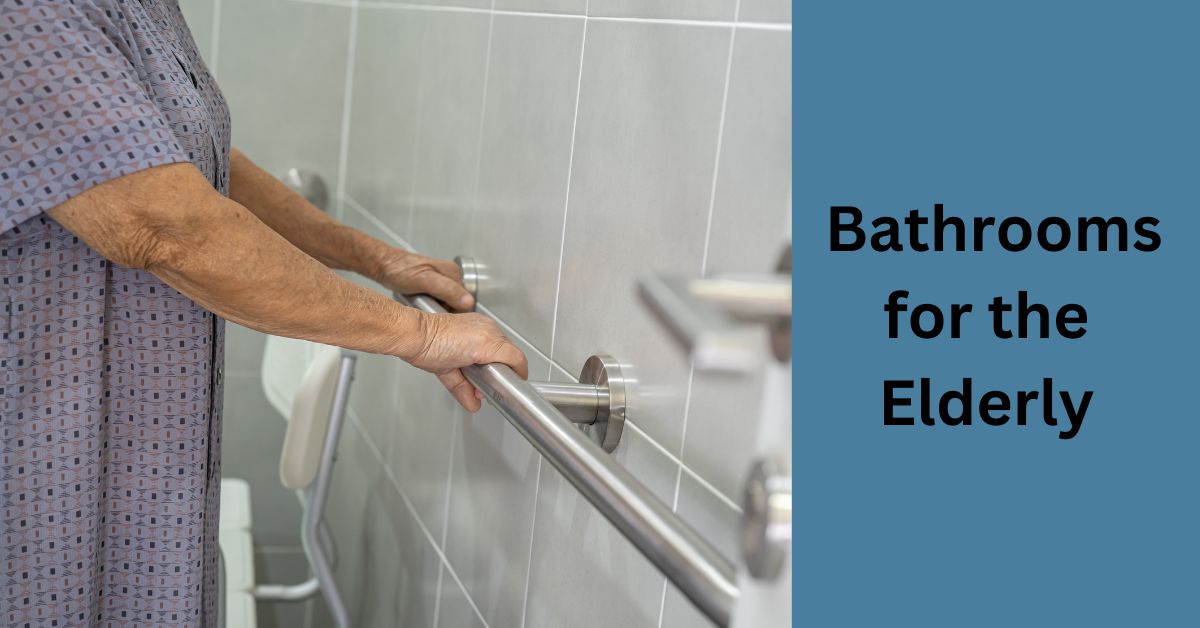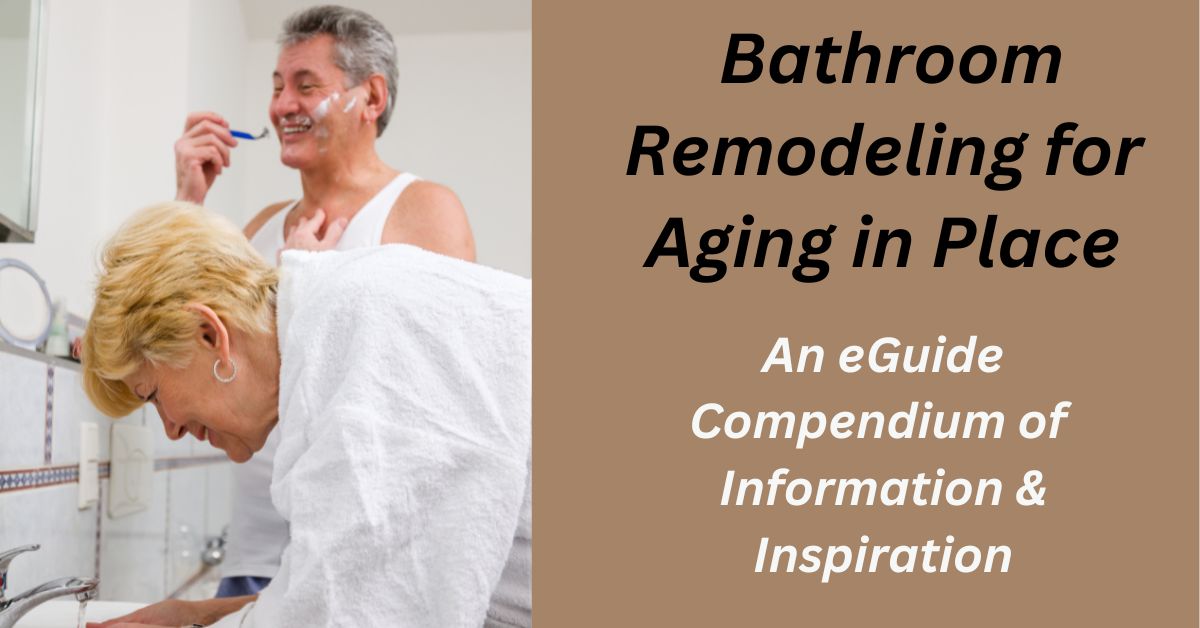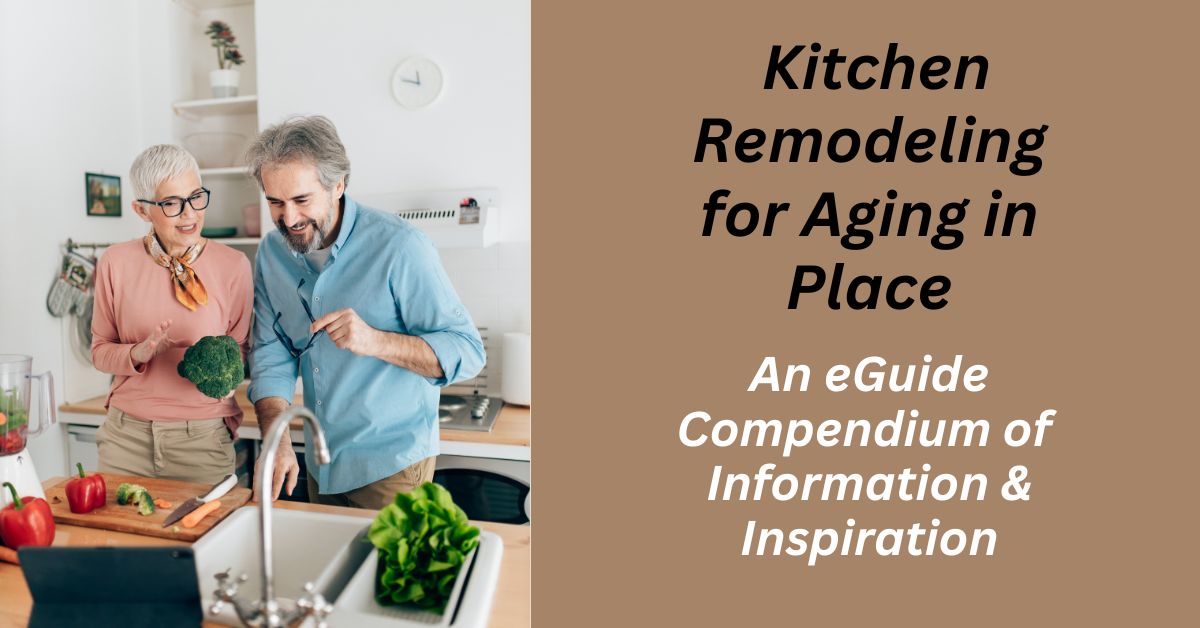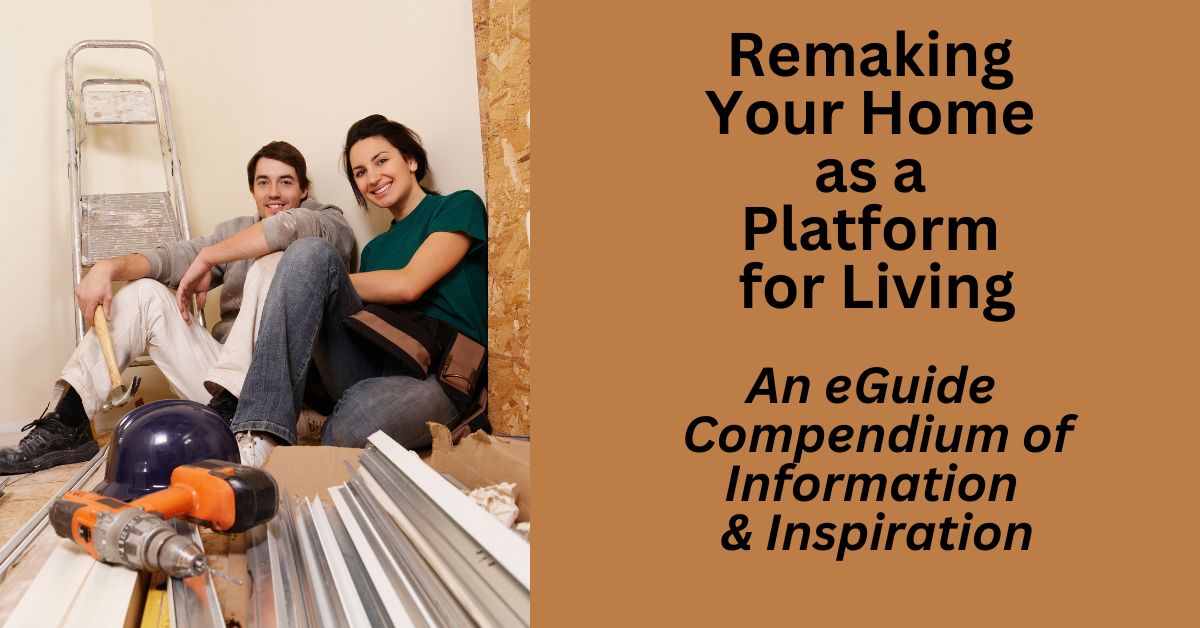Table of Contents
Note: If you came to this post on bathrooms for the elderly through a random search, please click on this parent page and our home page for more context.
Bathroom Remodeling for Seniors
Planning for aging in place starts with bathrooms for the elderly.
Why start with the bathroom? Well, the top priority of an aging-in-place project is physical safety. This is closely followed by convenience, or (in the jargon) “accessibility.”.
- Related post: Aging in Place
Senior Safety
It is simply a fact of the aging process that as we get older, the time we spend in the bathroom increases. So this is where safety and convenience become a real priority. And here is why.
As we age our physical and mental faculties diminish. This is a simple fact of life, although the speed of the process varies with the individual. But the point is that we need to face it and provide for it in advance.
The National Council on Aging tells us that older people suffer injuries from falls more than any other cause.
The Centers for Disease Control and Prevention tell us: “All persons, but especially older adults, should be aware of bathroom activities that are associated with a high risk for injury and of environmental modifications that might reduce that risk.”
In light of this, it only makes sense to address bathroom safety issues before we do anything else with our remodel. We are more likely to suffer a fall in the bathroom than anywhere else in the home.
This comes into focus when we think about all the various physical activities we undertake in the bathroom and how they might be affected by impaired strength, agility, vision, and balance. And this is on top of the possible effects of the medications we take.
Senior Convenience
Beyond the risk of falls, comes the convenience that promotes our general wellness and comfort. This is our next priority after safety.
The visual appeal of the bathroom comes next because it enhances our enjoyment of the bathroom experience. Considerations of adding to or detracting from the market value of the home come a distant last. This is because our priority is living in the home, not selling it.
However, it must be said that the things we will be doing to the bathroom, which generally comport with the principles of Universal Design, will likely add value in any case.
That said, we address below the main ways in which we will add safety and convenience to our home, as we proceed with our aging-in-place bathroom project.
Bathroom Accessibility – Fundamentals
- In the case of a two-story home, put a bathroom on the first floor if this is feasible. If you have to work with an upstairs bathroom, set up a stairlift chair.
- Enlarge the bathroom door to a width of 36” such that you can enter it in a wheelchair or navigate it easily with a walker. This might not be what you need right now, but it is wise to make the provision now, while all resources are on-site and to avoid having to tear things up later.
- Instead of a swing door, you might put in a pocket door. This saves the space that is taken up by the door swing.
- The bathroom door should have lever-type handles. These are much easier to use than the type of doorknob you have to grasp and twist. You should actually put a lever handle on every door in the house, for the same reason.
- You should be able to unlock the bathroom door from the outside.
- The layout of the remodeled bathroom should provide for wheelchair clearances to make sure there is wheelchair access to the shower, bathtub, and toilet.
- There should be a 60” turn radius at the bathtub. In other areas, there should be clear maneuvering spaces of 36” x 36” or 30” x 48”.
The ADA (Americans with Disabilities Act) provides excellent reference material for aging-in-place remodeling. However, we should point out that the ADA itself does not regulate private homes.
Bathroom Floor Coverings and Senior Safety
- Non-slip flooring: Definitely stay clear of slick flooring material, such as marble and smooth tile. Select tile with non-skid, rough surfaces. You can use this type of tile on shower floors as well.
- Non-slip vinyl or rubber are good flooring choices.
- When you select flooring material check that it is ADA-compliant for slip resistance.
- Stay away from any floor covering that you can trip on or that can impede the operation of a walker or wheelchair.
- Rubberized mats for the tub are popular but we think you should avoid them. Instead, use adhesive non-slip strips on the bottom of the tub, or choose a tub with a textured bottom.
- You can paint non-slip coatings on floor surfaces.
- We just mentioned non-slip adhesive strips. They come in contrasting colors and this can be beneficial when providing for people who are visually impaired.
- Eliminate things that clutter the floor and can be trip and fall hazards. This includes things like bathroom scales and laundry baskets. If you must have them in the bathroom, put them out of the way, such as in a cabinet knee space.
Shower and Bathtub Safety
- Stay away from the step-over or step-in type bathtub. Only the nimble should use these.
- You could use the CleanCut Convertible Bathtub Accessibility Kit
- to convert a bathtub into a walk-in shower. This is an economical solution. It involves cutting a section out of the side of the tub and making good the opening.
- If a bathtub is a must, get the walk-in kind with a shower add-on.
- For a very enjoyable spa effect, spring for a walk-in tub with jets.
- Our own recommendation is to ditch the tub and opt for a roll-in, curbless, or damless shower. This is a much more manageable option should wheelchairs and caregivers become necessary.
- The shower should have room for a portable transfer bench. Or it can have a permanent built-in bench. Standing in a shower for an extended time can be stressful, even dangerous. Also, senior ladies will find it much easier to shave their legs sitting on a bench.
- The shower should have dual showerheads. One of them should be on a vertical slider that allows you to adjust its height. The other should be a hand-held wand on the end of a flexible There should be an on-off button on the wand.
- The shower walls and the bathtub surrounds should contain recesses and shelves for bathing accessories like soaps, shampoos, nail brushes, and loofahs. All of these should be easy to reach.
- Shower and bathtub controls should be located where you can easily reach them from outside the tub or shower.
- If you have the room, lay out the shower in such a way that it does not need a shower door. If you must have a full shower enclosure, avoid a shower curtain. A glass door with good-sized handles gives better stability.
Toilet Safety
- Get rid of the standard low-rise toilet and put in a ‘“comfort height” toilet. It is much easier to get on and off this type.
- If the budget is an issue, go with a toilet seat riser as an alternative.
- The toilet paper holder should be within easy reach and let you change the toilet roll one-handed.
- Get a bidet. The bidet is particularly effective to help seniors deal with personal hygiene.
- A standalone bidet is not necessary. Besides, there is rarely room for one and they need dedicated plumbing. The Washlet toilet/bidet combo by Toto is highly recommended.
- Related post: Bidets
Think About a Wet Room
- A wet room is a tiled area, usually with twin drains, that accommodates the bathtub, shower, toilet, and wash basin. The sink is usually cantilevered off the wall, as you do not want cabinetry in a wet room
- A wet room is easy to keep clean and is ideal for wheelchair manoeuvering and patient management by a caregiver.
Consider a Sauna or Steam Shower
- If the spending plan allows for it and you have space, look at installing a sauna or steam shower.
- Actually, a steam shower does not need additional space, except for the steam generator, since it doubles as a standard shower.
- When correctly used, saunas and steam showers bestow great health benefits on seniors.
- Related post: Indoor Sauna
Safety – Grab Bars
When we feel unsteady on our feet, we instantly react by reaching for the nearest solid thing to hold onto. And, if we have done our bathroom homework right, this will be a grab bar. But grab bars also help us get up and down, when from the shower seat or toilet. And they help us get in and out of the bathtub.
So let’s dig into the best use of grab bars, and also grab rails:
- Put grab bars and grab rails anywhere you think they might be needed. Too many are better than not enough. Remember, bathroom safety is paramount and we are not concerned much about aesthetics.
- You should certainly have grab bars and rails close to the toilet, on both sides. This is to help with sitting down and getting up. Install grab bars and rails in the shower and in the bathtub surround.
- Instruct your contractor to ensure there is framing and blocking in the walls to provide strong attachment points behind the tile and drywall. They need to be sufficient to support up to 300 lbs of body weight.
- Floor-to-ceiling vertical grab bars can be a useful addition to your grab bar strategy. And it is a strategy – grab bars save lives.
- Do not rely on suction-attached type grab bars. They might be OK to help us steady ourselves briefly but literally do not carry much weight and, in our opinion, you should stay clear of them.
- Use large-diameter, textured grab bars and grab rails for the best grip.
- These days. grab bars come in many different styles and colors. You do not have to settle for an institutional look.
- And many grab bars are multi-functional. They can incorporate the functions of washcloths or towel rails, shelves, and soap holders
- Related post: Bathroom Grab Bars
Bathroom Vanities for Aging in Place
- With wheelchairs in mind, set the vanity at an appropriate height so that there is knee room below it. You want to be able to sit in a wheelchair (or another chair for that matter) and reach over the countertop to faucets at the back of the sink.
- In fact, a good arrangement is to mount the faucets to the side of the sink.
- Instead of a sink mounted in a vanity, you could take a look at a cantilevered wall-mounted sink or a pedestal sink. These already have knee room underneath.
- If you have other family members to consider, take a look at multi-level vanities.
- Install a vanity mirror with an adjustable tilt so that someone sitting in front can use it.
- Related post: Integrated Countertop and Sink
Vanity Faucets for Aging in Place
- For people who have a hard time using their hands, proximity sensors, and hands-free faucets are ideal.
- Or you could go with a foot pedal faucet.
- At the very least, use lever-type faucets. Avoid faucets that you have to grasp and twist. Arthritic hands do not like this.
- Related post: Bathroom Vanity Faucets
Bathroom Cabinetry for Aging in Place
- Maximize storage opportunities by installing as many cabinets as the space can accommodate without affecting accessibility.
- Install adjustable height cabinets or place them at varying heights.
- Clutter can indirectly cause accidents. So, minimize the effect of clutter by maximizing available countertop space.
- Have your contractor see to it that there are no sharp edges or corners in the countertops.
- In anticipation of possible future visual impairment, put contrasting color edges on the countertops.
- Have the cabinetry designed with pullouts and drawers. When you pull these towards you, it is so much easier to see your stuff than if it is stuck away behind a cabinet door. It is much easier to organize your stuff too. And you don’t need to bend and stoop to stare into a dark hole to find your stuff. Plus you don’t have to reach in and grope for it. Take this advice from a former cabinet guy.
- Towels are best kept on open shelves.
- Include power hubs for hairdryers and handheld device chargers within drawers.
- Make sure the medicine cabinet is as large as possible and reachable from a sitting position.
- Related post: Bathroom Vanity
Bathroom Lighting for Aging in Place
- Safety requires a well-lit bathroom.
- Install non-glare lighting.
- Make maximum use of natural light.
- Make sure there is a light in the shower.
- Put the lighting on a motion sensor switch. You do not want to grope around for a light switch.
- Place vanity lighting to the side of the mirror rather than above it.
- Bright and contrasting surface finishes make a good complement to your lighting design.
- As we age, we tend to move more slowly. So put a heat lamp in the ceiling. You will welcome the additional comfort.
- Related post: Interior Lighting
Water – A Safety Note
- Make sure that there is an anti-scald device at your water heater. Scalding can cause severe damage to aging skin. This device will keep the water at a safe (approx 120° F) temperature.
- Put in water pressure balancing valves. In case someone runs a kitchen faucet or flushes a toilet, they will keep the water flow steady.
Help On Call – A Safety Note
- You should be able to reach a telephone from the shower or bathtub.
- You could install an intercom to communicate with other areas of the home.
- These measures would be in addition to any medical alert system.
Final Note – Easy Maintenance Finish Materials
Select surfaces that are easy to keep clean. Solid surfaces are best. Minimize floor tile grout lines. Use seamless shower wall panels rather than tile.





Leave a Reply